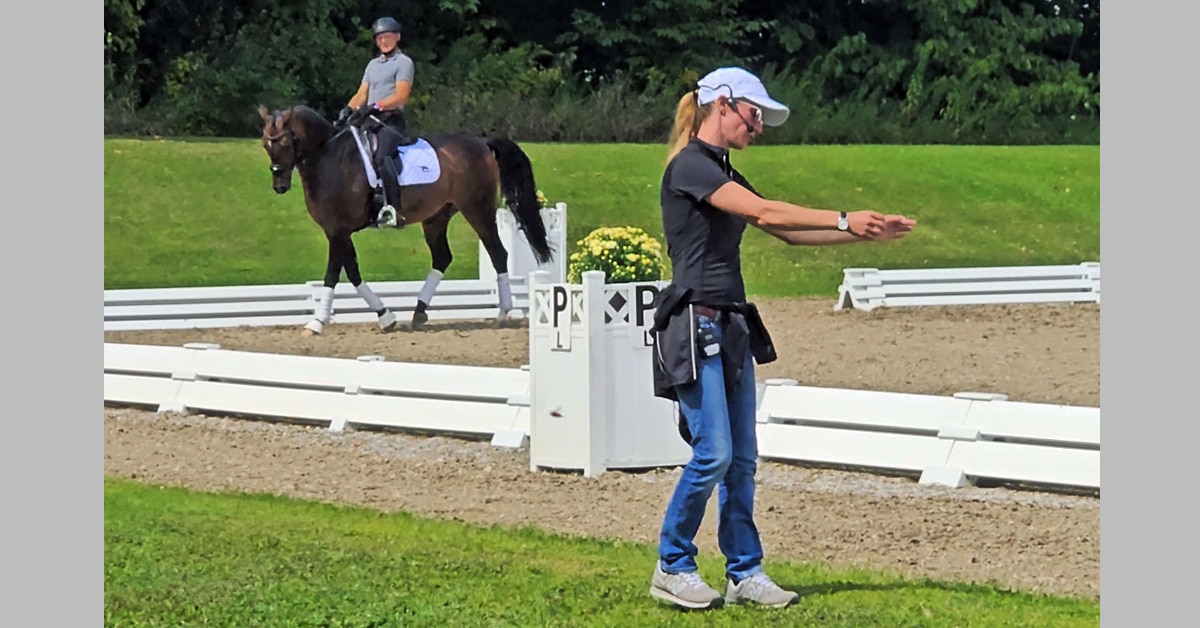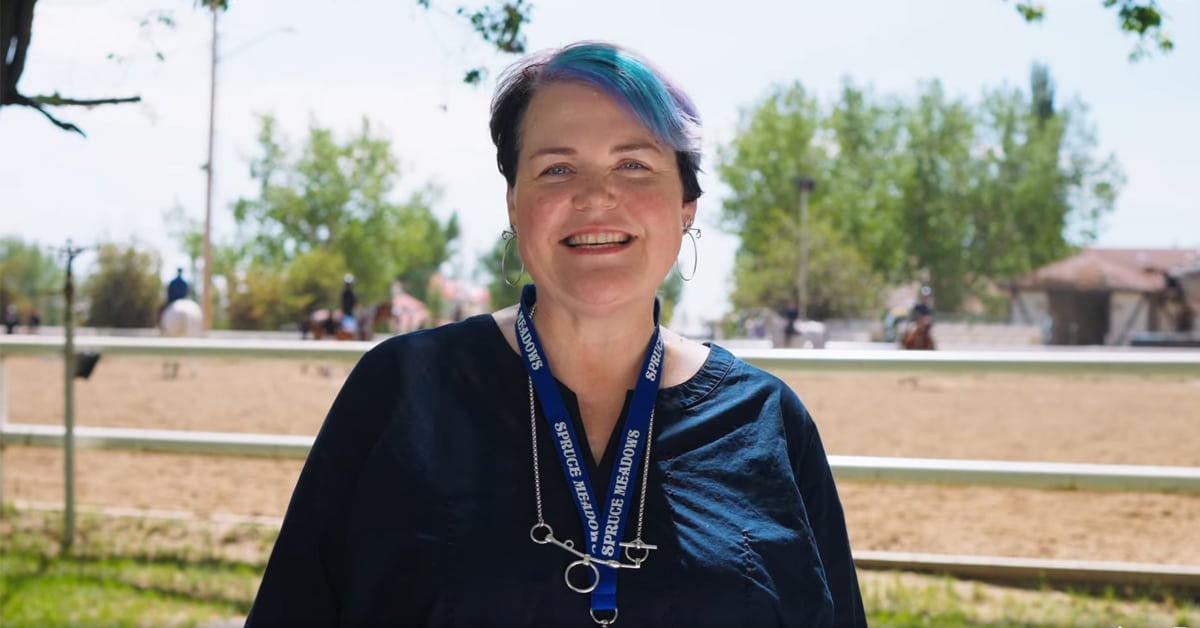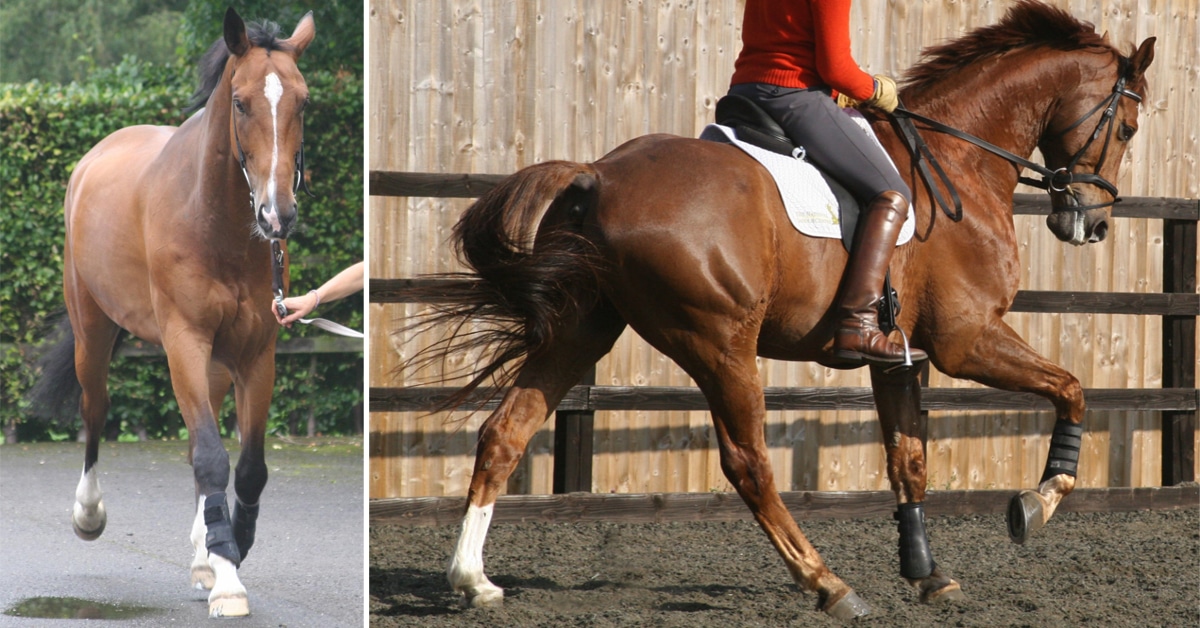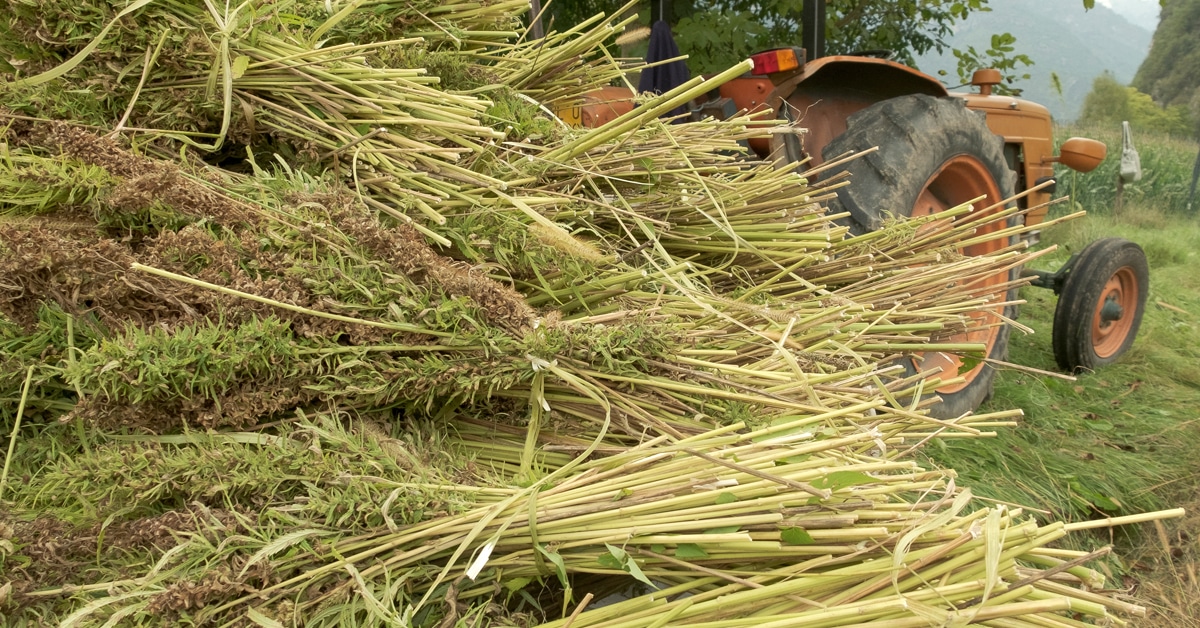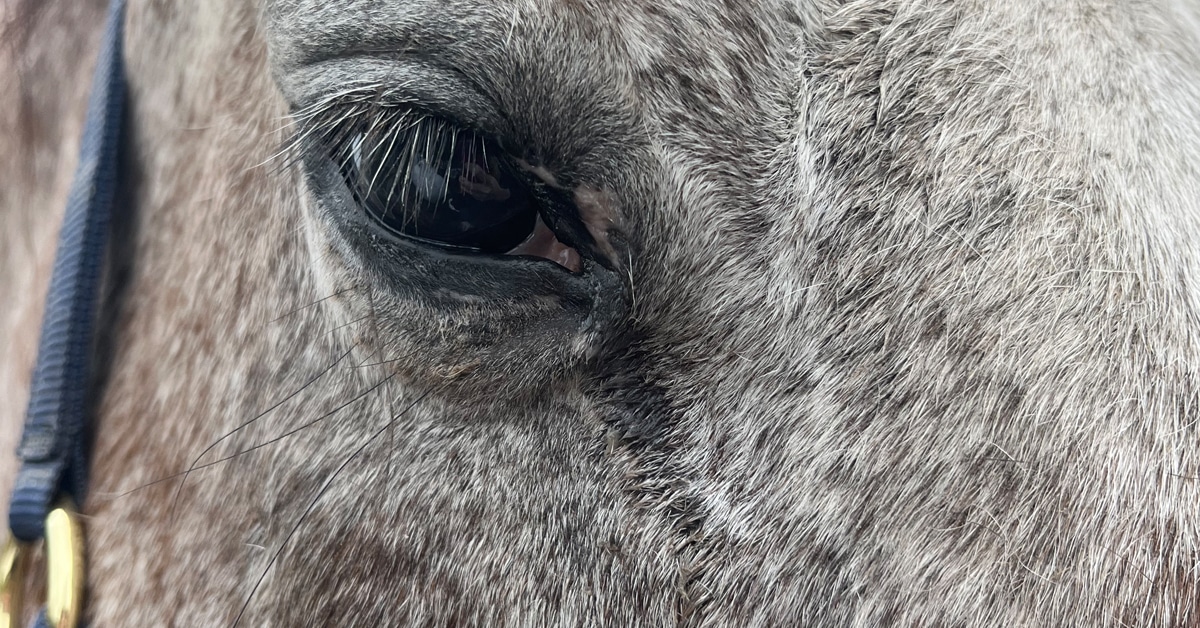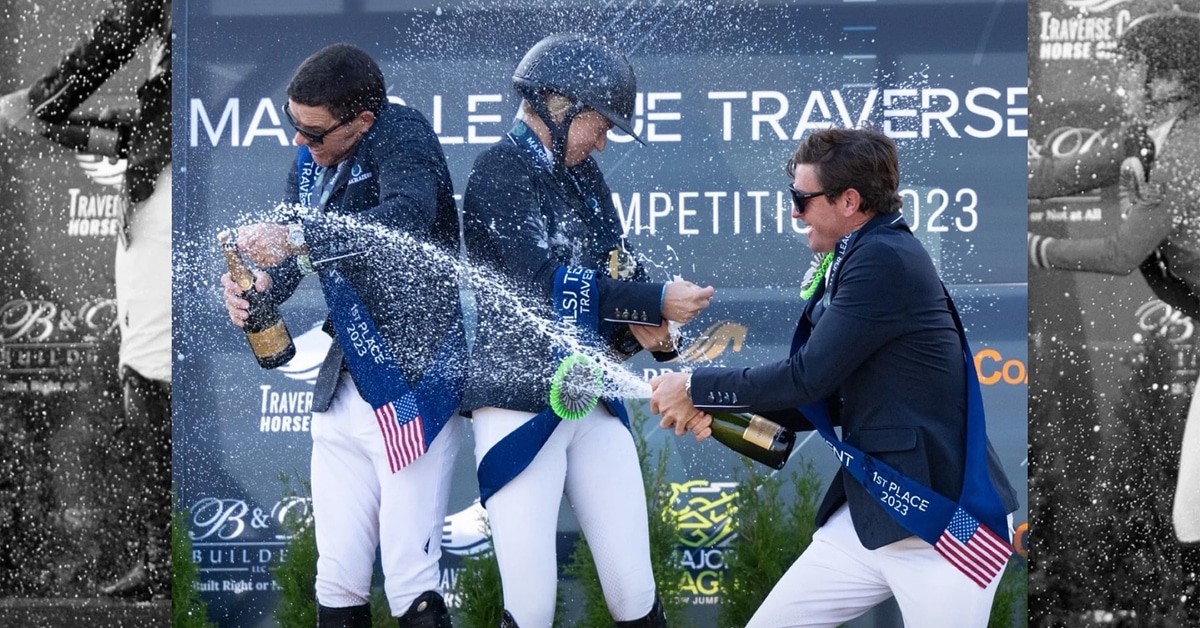In the not-too-distant past, there was no mandatory oversight of equestrian coaching. Anyone who felt they were able to coach riding could hang out a shingle and do just that. While official coaching certification existed, it was voluntary. If a coach chose, they could obtain a Level I, II, or III designation, which changed in 2015 to Instructor, Competition Coach/Competition Coach Specialist, and High Performance 1.
Everything changed in 2018 when Safe Sport, a Government of Canada program, mandated that “coaches across all sport in Canada must meet high standards of safety and screening to provide a safe, welcoming, and inclusive environment.”
In order to comply with these standards, Equestrian Canada (EC) introduced the Coach Status program. This program verifies that all coaches are insured, screened, and trained in necessary safety measures such as concussion awareness, first-aid, and training to address maltreatment in sport. A coach with this minimum standard of coach status is called a Registered Coach.
A second program that works in tandem with Coach Status is the Coach Certification program. Coach certification is the formal education process of coach training and evaluation. This mechanism aims to ensure that coaches are competent ‒ they need to obtain a level of proficiency in riding, stable management, and program planning. The “gold standard” for coach certification is the National Coaching Certification Program (NCCP), although a number of other existing programs (such as Pony Club A levels) are also recognized.
Coaches who have Coach Status and Coach Certification meet the qualifications to be called Licensed Coaches. Under this term, there are a number of different levels a coach can achieve, ranging from Instructor, who works with novice riders, all the way to Competition Coach and High Performance Coach who works with elite athletes.
Currently, any coach who wishes to coach at an Equestrian Canada sanctioned platinum or gold show must hold a minimum of Registered Coach status. As part of a multi-year rollout program, Equestrian Canada plans to phase in new requirements year by year. For example, in 2023, coaches participating in platinum and gold shows will need to have Licensed Coach status. Each year the requirements will encompass more show levels. By 2025, Licensed Coach status will be required across all levels of EC shows.
Janelle Bruce, the Equestrian Canada Coordinator of Coaching, explains the benefits of the programs. “They create that standard and provide the tools for the coach to be in a better position. They need to have training in Standard First Aid and a Concussion Protocol. Also, they must have insurance which protects them from a claim. Every coach must have a minimum of two million dollars of liability. Also, every coach must have a criminal background check. You can see how this protects the public.”
Susan Laverty, a coach listed on EC’s Find a Coach directory, is a long-time English riding coach who operates out of Lane’s End Stables in Bobcaygeon, Ontario. Susan explains how she navigated the process of obtaining Coach Status.
“I have been a certified coach since 1993, and so the next step for me was to obtain my EC Licensed Coach status. It was not particularly onerous ‒ police checks, a few online modules to complete, and the payment of an annual fee. Does it make any difference to my business? No, it does not. I have yet to have a parent ask if I have any certification as a coach.”
Victor Sobrevals is a rider at Rocky Mountain Show Jumping in Calgary. He initially planned to pursue coach certification, but then changed his mind. “You see the coaches at the shows with 20 students and more, and I don’t always respect what they are doing, and what they are teaching. I just don’t see the benefit of it.”
Another Alberta coach, who preferred not to be named, is not certified, and has no plans to obtain the certification. “I don’t respect many of the instructors who are certified. And there’s no horsemanship component,” she said, referring to understanding horse behaviour and psychology. “How can I pursue a program that is missing such a fundamental component?”
Horsemanship is a term often used, although the interpretation of the term will vary by person. Top coach Eric Lamaze, chef d’équipe of the Canadian Show Jumping Team, underlines the importance of horsemanship, as he sees it. “A top rider is a good horseman. Understands horses, knows the management of horses. Knows how to use his horse, how many shows to do in a year and what level every horse should jump, when they should rest, when they should come up.”
The new requirements may be inconvenient for some, but they are now required by the government and serve as a tool EC can use to help grow the sport
The new requirements may be inconvenient for some, but they are now required by the government and serve as a tool EC can use to help grow the sport. Moreover, the oversight and training required to achieve Licensed status will ensure that students are exposed to coaches who have formal training and know how to conduct lessons in a safe environment. Aside from the difficulty in getting buy-in from industry coaches, EC also faces challenges in how it is implemented. Right now, it is up to horse show organizers to verify that a coach listed on an entry form is indeed Licensed be manually doing a database search, though EC is working on a way to streamline that process. The other issue is that many riders make their own entries and can include the name of any Licensed coach on the form to bypass the requirement, even if they don’t train with that coach.
Despite push-back, there have been many early adopters that appreciate the training and have found the lessons valuable.
Anne Louise Abraham, a coach in Sydney, NS who has participated in FEI endurance races in the Middle East, has praise for the knowledge she gained about rider health in the NCCP program. “I appreciate the recent emphasis on athlete mental health in the continuing development programs. Training techniques such as exercise as punishment and pushing physical boundaries [that were used on me] did propel me a great deal, however they also had long term mental and physical consequences. EC has been a great partner by supporting and fostering a deeper understanding of mental health while learning and training.”
Abraham emphasizes the importance of coaching done right. “What a gift that we can help people begin a journey with horses. If done right, those people might begin a lifelong path with animals which is beneficial for both horses and humans alike. It’s the coaches ushering in beginners of all ages, walks of life and abilities that set the stage for growth in the industry. This is not an easy task and I would love to see riding school programming and coaches featured and engaged towards this very worthwhile contribution to the industry.”
Clare Hobson, a Licensed English Competition Coach Specialist based in Smithers, BC, speaks to the steep cost of obtaining coach certification. “While the prices for certain pieces of the puzzle are listed, like the price for EC Bronze membership and the fee for taking the actual exam, there is no mention of the hidden costs. Every potential candidate will need to take regular lessons to gain knowledge to be able to coach the lesson topics with confidence. Add in the ongoing cost of the horse(s) that are suitable to be tested on, the equipment costs, travel costs and gaining show experience. The spending list goes on.
“Let’s move on and say the candidate successfully attains the level of ‘competition coach’ and starts coaching. Even if they are a great coach, they will be hard pressed to find a full-time coaching position. The majority of equestrian coaches have to default to getting another job outside of their profession.”
Hobson underscored the complexity of the process for a coach who is just getting started. “There are five organizations that candidates need to at least familiarize themselves with, if not become members of: NCCP, Coach.ca, Equestrian Canada, PTSOs, and the PTCRs (Provincial/Territorial Coaching Representatives). For a newbie, this is mind-boggling! After struggling in my own mind how to create a pathway for my riders to follow, I actually created a spreadsheet so that each individual would know what they need to focus on first. Even this seems challenging to grasp.”
Bruce takes us through a few different scenarios to help understand the specifics of the process.
Scenario One: A rider with no formal qualifications who wishes to become a Licensed Coach
“The rider levels are the primary starting points that must be achieved, depending on the context of certification the coach would like to pursue,” Bruce explained. “Passing the rider levels is the first step to certification.”
There are two components to rider level evaluations – riding and written. Evaluations are rolled out through each province’s Provincial Organization. There is no set standard for the costs associated with it. Once the appropriate rider level is passed, she can begin the certification process through the NCCP.
Registered Coach Status is also required before attending an NCCP evaluation. “Rider Level 6 must be achieved if the individual wants to pursue NCCP Instructor certification and Rider Level 8 must be achieved if the individual wants to pursue NCCP Competition Coach certification.”
Scenario Two: A coach who has been in the industry for years, but has no official credentials.
If the person has been teaching for 15 years or more, he can submit a “certification exemption request with his licensed coach status application,” explains Bruce.
“If he has less than 15 years of experience, he will need to achieve Rider Levels, which opens the door to the NCCP. He can challenge the exam for the highest rider level he thinks he can pass. When challenging a level, he will need to write all the written exams for each level, but will only be evaluated on the riding portion of the highest level being pursued. Then, he can proceed to the NCCP to obtain Licensed Coach status.”
Bruce acknowledges there have been limitations with the rollout. “Yes, this has been a challenge. Yes, this is a huge program. There are many things we have adjusted. We do review feedback and spend time addressing those concerns. Anyone is welcome to email coaching@equestrian.ca with comments, questions, or concerns.”
Glossary
Coach Status – EC’s way to recognize and identify active coaches. Coach status verifies that coaches are insured, screened, and trained in all necessary safety measures, such as concussion awareness, standard first-aid, and training to address maltreatment in sport. Coach status comprises both Registered Coaches and Licensed Coaches.
Coach Certification Programs – A number of program that Equestrian Canada recognizes in order to achieve Licensed Coach Status. These comprise the National Coaching Certification Program (NCCP), the International Group of Equestrian Qualifications (IGEQ), Canadian Therapeutic Riding Association (CanTRA), Certified Horsemanship Association, Provincial Vaulting Trainer Certificate, and Pony Club. Click here for more information.
Licensed Coach – A coach with extensive and verified expertise, either through formal Coach Certification, Equine Education (eg. A post secondary equine program), or validated practical experience of more than fifteen years in a leadership role.
National Coaching Certification Program (NCCP) – The “gold standard” to obtain Licensed Coach Status. NCCP provides standardized, inclusive, and safe sport education to coaches and coach developers across 65 sports.
Provincial/Territorial Sport Organizations (PTSOs) – Each province or territory’s equestrian organization. They are responsible for rolling out Rider level evaluations.
Registered Coach – Self-declared coaches and instructors, including those working towards becoming a Licensed Coach. Applicants are actively engaged in equestrian instruction and coaching.
Rider Levels – The process by which riders prove their proficiency in riding and stable management. There is both a written and riding component to each level. Rider Level manuals are available to buy through the PTSOs.
Safe Sport – Both a movement, as well as a training module, developed by the Coaching Association of Canada that helps anyone involved in sport to identify and prevent situations of maltreatment.
The Latest
